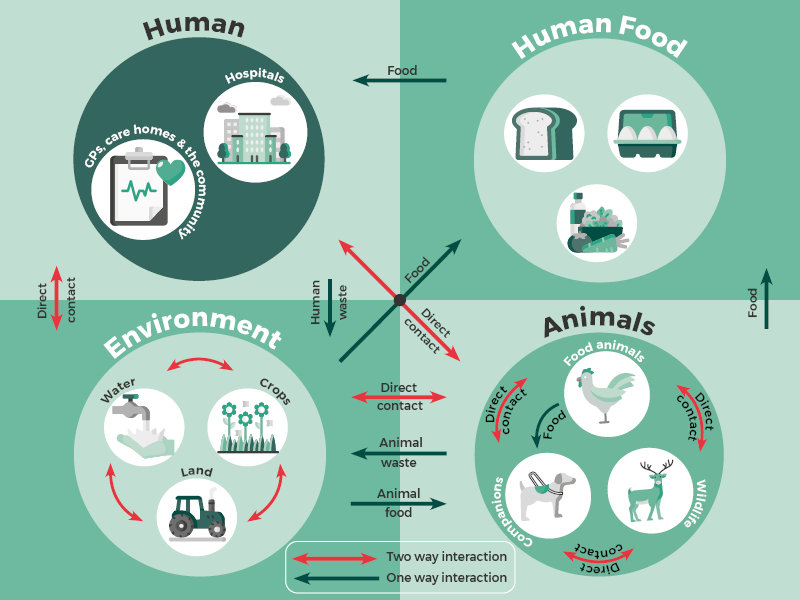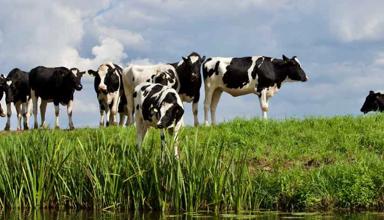Antimicrobial resistance (AMR) is “one of the top global public health and development threats”. To support the fight against AMR, the World Health Organisation (WHO) leads World AMR Awareness Week (WAAW) between 18-24 November.
As the UK enters the second 5-year phase of the 20-year National Action Plan (NAP) in the fight against AMR, this article explores the latest developments, outcomes and targets within Wales and the UK.
What is Antimicrobial Resistance?
When microorganisms, such as bacteria, viruses, fungi and parasites, no longer respond to medication, they have evolved to have antimicrobial resistance. Resistance develops naturally when microorganisms are exposed to antimicrobials, but it can be accelerated through inappropriate use, such as incorrectly taking antibiotics for a viral infection. If action is not taken against AMR, it will leave us vulnerable to diseases and infections that were previously easy to treat. Some cases of tuberculosis and gonorrhoea are already resistant to antibiotics of last resort. As WHO states:
AMR puts many of the gains of modern medicine at risk. It makes infections harder to treat and makes other medical procedures and treatments – such as surgery, caesarean sections and cancer chemotherapy – much riskier.
Each year AMR causes 7,600 preventable deaths in the UK and over one million worldwide. Scientists have predicted that this could rise to 1.91 million deaths by 2050 worldwide, where 65% of deaths would be in those aged 70 and over.
AMR is not only limited to humans; it also affects plants and animals, threatening food security and the health of our wider environment.
As climate change worsens, the risk of AMR increases, and the need for control becomes increasingly urgent. High temperatures, extreme weather and the loss of biodiversity can change the dynamics of disease transmission and our ability to tackle them.
What is being done to address the problem?
As seen in the COVID-19 pandemic, diseases do not respect borders, and the same can be said for AMR which is a growing problem worldwide. In response, the WHO developed a global action plan. Following this, the UK Government and the three devolved governments, created a 20-year national action plan (NAP) with four 5-year phases. The first phase of the NAP ran between 2019 to 2024. The House of Commons Library has produced a research briefing detailing the outcomes and targets for the 2024-2029 phase.
One Health Approach
As defined by the WHO, the One Health Approach for disease control recognises the links and interdependence between the health of humans, animals, plants and the wider environment. AMR occurs in many different settings and situations, with crossovers in the drugs used to treat human, animal and plant diseases. The UK Government uses the diagram below to illustrate how our health is connected to other parts of our lives and the environment.

For example, hospitals can release AMR microorganisms into the environment via wastewater. This can enter water systems and could infect humans, pets, crops, or agricultural animals, as well as wild plants and animals.
The 2024-2029 phase of the NAP continues to focus on a One Health approach. This phase has nine strategic outcomes, organised under four themes which cover human health, animal health, agriculture and the environment:
- reducing the need for, and unintentional exposure to, antimicrobials;
- optimising the use of antimicrobials;
- investing in innovation, supply and access; and
- being a good global partner
The Pathogen Surveillance in Agriculture, Food and Environment (PATH-SAFE) project is a £19.2m investment into One Health surveillance. Running for four years, it is supported by over 50 organisations including the Welsh Government and Public Health Wales (PHW). It supports the National Action Plan (NAP) by sequencing DNA to identify new AMR strains and trace the source of disease outbreaks. It has been funded for an additional year at a cost of £4.7m.
Antimicrobial subscription service
The first antimicrobial subscription service was trialled by NHS England and NICE in 2019. The scheme aims to encourage the creation of new antimicrobials by industry partners and to prevent overuse. Under this service, the NHS pays a fixed annual subscription fee to a pharmaceutical company for access to newly developed antibiotics. The pharmaceutical company receives a guaranteed return, and there should be no incentive to overuse (or over sell) these medicines. This has led to a £1.9 billion contract with pharmaceutical companies for all four nations of the UK.
Innovative Welsh projects
Wales is at the forefront for managing AMR in farm animals. The Arwain Defnydd Gwrthficrobaidd Cyfrifol/Responsible Antimicrobial Use (DGC) project connects industry, farmers, vets and academics to monitor and support the responsible use of antimicrobials for farm animals.
The Arwain Veterinary Prescribing Champions (VPC) network, with Aberystwyth University and other Arwain DGC partners, have developed two national antimicrobial stewardship interventions and clinical guidelines for six significant cattle and sheep diseases. In 2023, the Welsh Government provided an additional £2.5m to continue this project.
The Welsh Government collaborated with the University of Bangor to carry out hospital wastewater testing for AMR. Bangor University has now secured an international collaboration which can further support testing for AMR in wastewater. The Environmental and Rural Affairs Monitoring and Modelling Programme (ERAMMP) highlighted a knowledge gap in Wales for the effects of combined sewer overflows (CSOs) on AMR in the environment.
What progress is the Welsh Government making?
In May 2024, the then Cabinet Secretaries for Health and Social Services and Climate Change and Rural Affairs released a joint statement emphasising the Welsh Government’s ongoing commitment to the NAP. The statement warns that:
In a future where antibiotics and antimicrobials are ineffective, routine surgery would become too dangerous to perform and chemotherapy prohibitively high risk.
The Welsh Government highlights progress made so far, such as:
- obtaining antibiotic usage data for the dairy, beef and sheep sectors;
- delivery of antimicrobial prescribing guidance for primary and secondary healthcare through a collaborative approach with pharmacists across NHS Wales; and
- development of the antimicrobial data library portal for NHS Wales across primary and secondary care.
PHW has created the Healthcare Associated Infection, Antimicrobial Resistance & Prescribing Programme (HARP). AMR surveillance data for urine and blood cultures are released yearly by PHW and are publicly available. The Welsh Government released the 2024-2025 healthcare associated infections and antimicrobial resistance goals for health boards and NHS trusts in September 2024. The targets reflect the NAP and the 2023-2026 PHW strategic plan.
The previous 10-year target was a minimum reduction of 25% of antimicrobial use in the community from the 2013/2014 baseline. In Wales a reduction of 19.8% was achieved.
The Welsh Government has set a new 10-year target of a 10% reduction of antimicrobial use by 2029/2030 (from the 2019/2020 baseline). This is also detailed in the Welsh national prescribing indicator target for 2024-2025 for antimicrobials.
Over the next five years the second phase of the NAP will be acted on in Wales and the rest of the UK. The Welsh Government notes, “success is dependent on a wide range of partners working together”. With lessons learnt from the first phase it’s hoped that with sustained action, this pervasive public health threat can be controlled.
Article by Mischa Emery, Senedd Research, Welsh Parliament
Senedd Research acknowledges the parliamentary fellowship provided to Mischa Emery by the Medical Research Council which enabled this research article to be complete






